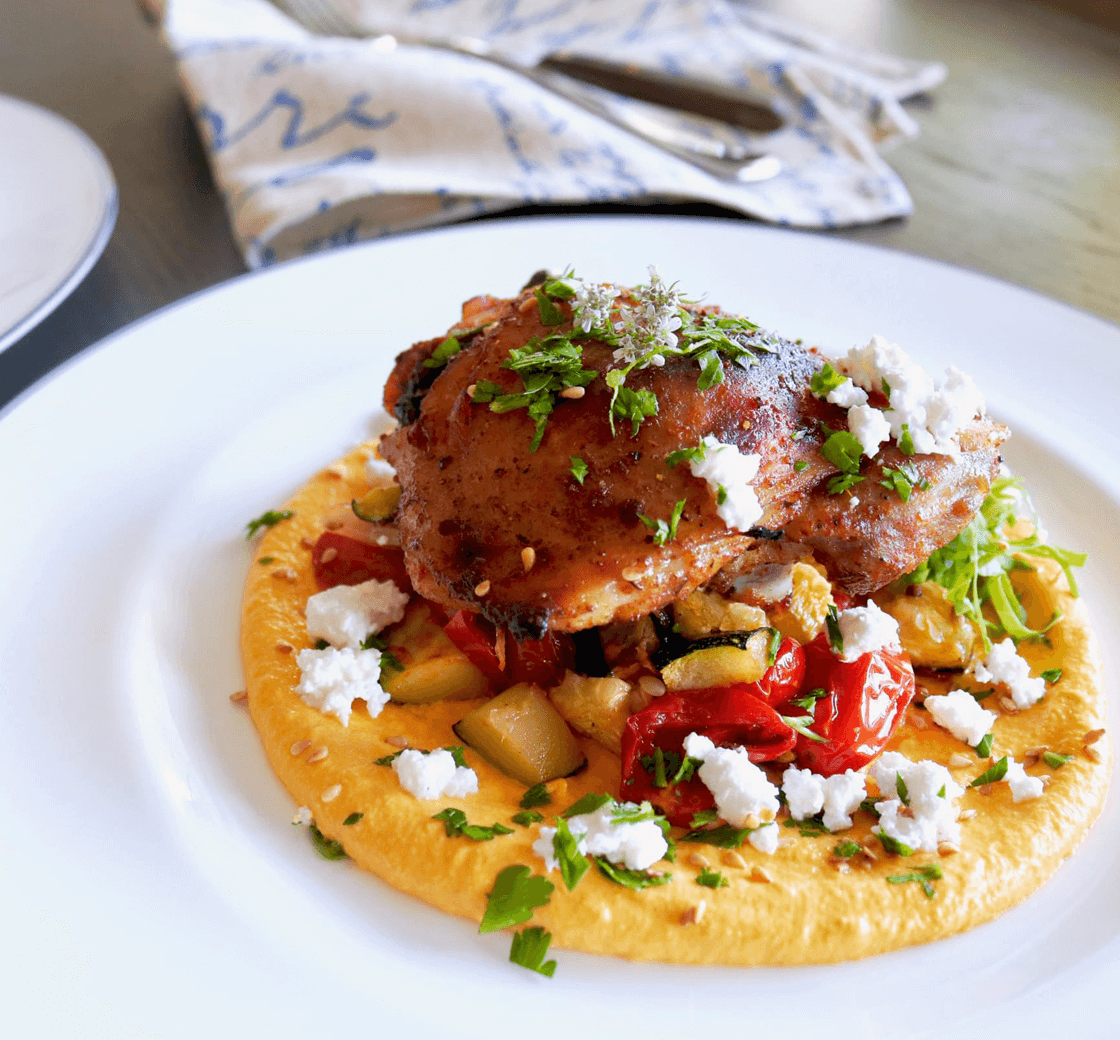
Although it contains vast areas of arid landscape, the Middle East is a fertile spot on the culinary map. Over the years, various empires have ruled the region's countries, leaving their imprint on the colorful, aromatic and diverse flavors. Recipes are dominated by spice blends, in-season vegetables and fruits, grains, olives and olive oil, nuts, herbs, and pickled and preserved foods. From Beirut, the “Paris of the Middle East,” to Jerusalem, considered the oldest city in the world, you will get a taste of the incredible culinary heritage with a magnificent vegetarian menu of hummus; tabbouleh; spicy falafel, tahini sauce; baba ghanoush and homemade pita.

You will work in teams to execute the class menu. At the end of class, participants gather to enjoy the food they have prepared. Wine is served with meals in most classes. All class menus are subject to change. While a snack platter is offered in both morning and evening classes, you may want to consider a light snack before joining us for class. Students are encouraged to bring a light lunch or dinner to all pastry classes.

You will work in teams to execute the class menu. At the end of class, participants gather to enjoy the food they have prepared. Wine is served with meals in most classes. All class menus are subject to change. While a snack platter is offered in both morning and evening classes, you may want to consider a light snack before joining us for class. Students are encouraged to bring a light lunch or dinner to all pastry classes.
Hearty hardly begins to describe the extravagant steak feast you'll be making in this class. Not only will you learn how to make the perfect filet mignon, skirt steak and more, but you'll also become versed in the art of rich sauces, like cognac cream, béarnaise and chimichurri. Your saucy menu includes: filet mignon au poivre with cognac cream sauce; onglet béarnaise (hanger steak with tarragon sauce) and skirt steak with Rojo chimichurri.
Make the one-pot profusion of Spanish flavors that paella comprises --- seafood, chicken, chorizo, rice and more --- come to life. You'll learn to make masterful cuttlefish-ink paella and paella from Valencia, in addition to some spectacular Spanish tapas. Your menu includes: garlic shrimp; tortilla española; arroz negro paella; and paella valenciana (paella with shrimp, chicken and chorizo).
Unlock more Thai culinary secrets in "Essentials of Thai Cooking II.” This hands-on class builds on fundamental techniques, guiding you through authentic dishes and dispensing lessons in more rigorous skills. Master the refreshingly crunchy Green Papaya Salad, then temper the hot and sour notes of Tom Yum with Shrimp. Learn to stir-fry savory Pad See Ew with Chicken and layer flavor in Green Curry with potato and eggplant. Finally, discover the secret to perfectly fluffed Coconut Jasmine Rice. Expand your Thai cooking repertoire and impress your friends with these delicious, restaurant-quality creations!
Learn how to make scrumptious dumplings from a wide range of Asian traditions --- all hands-on. We'll also create perfect dipping sauces in each tradition. Together, you'll make and dine on: steamed shrimp shao mai with orange dipping sauce; deep-fried chicken wontons; vegetable gyoza with spicy dipping sauce; and pork and chive dumplings.
Ranked as America’s Best Culinary School (USAToday 2019), our roster of Chef-Instructors have run top kitchens around the globe.
| (Separate multiple addresses with commas like: john@aol.com, jane@aol.com) | |